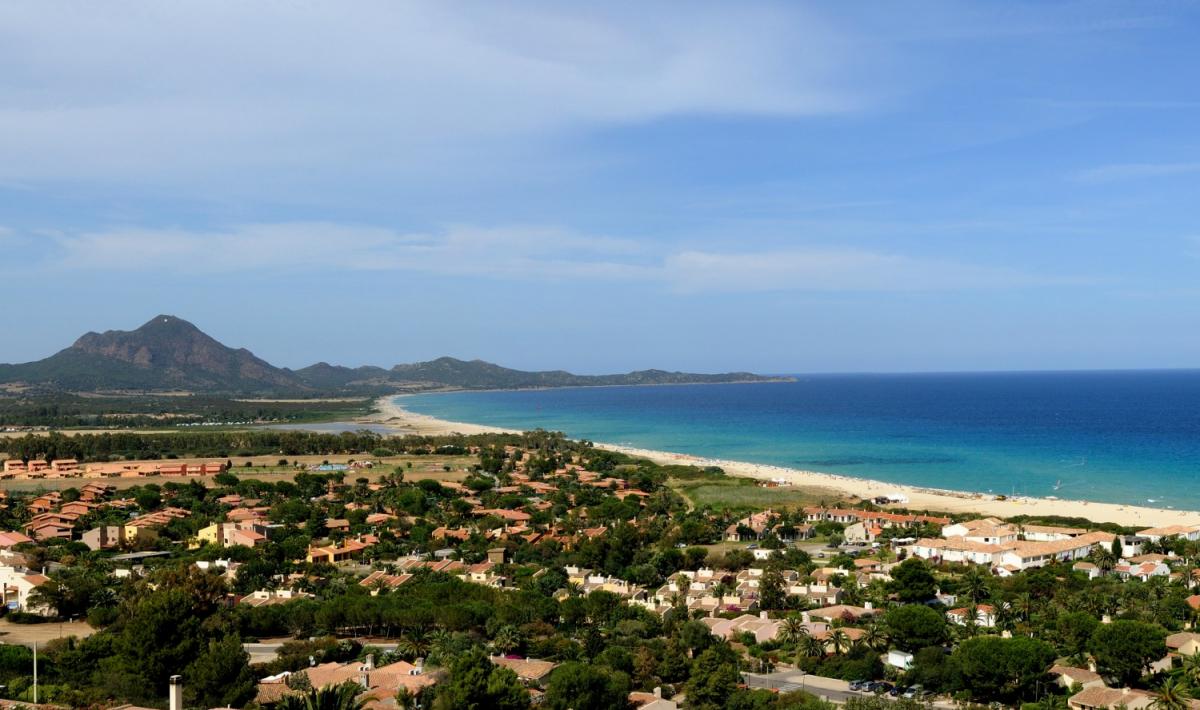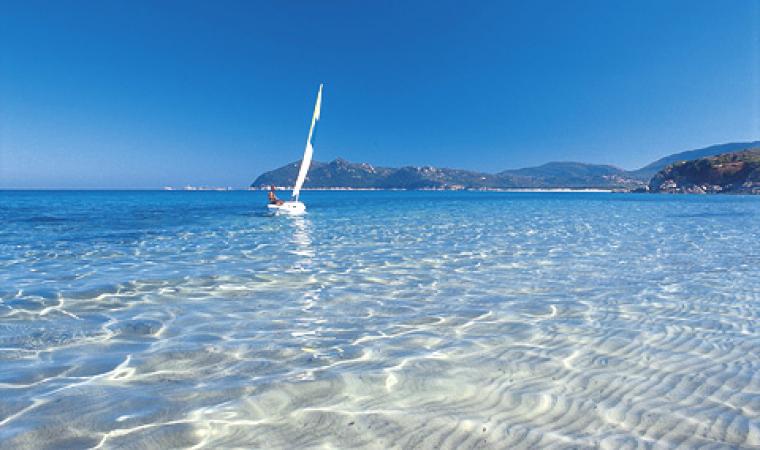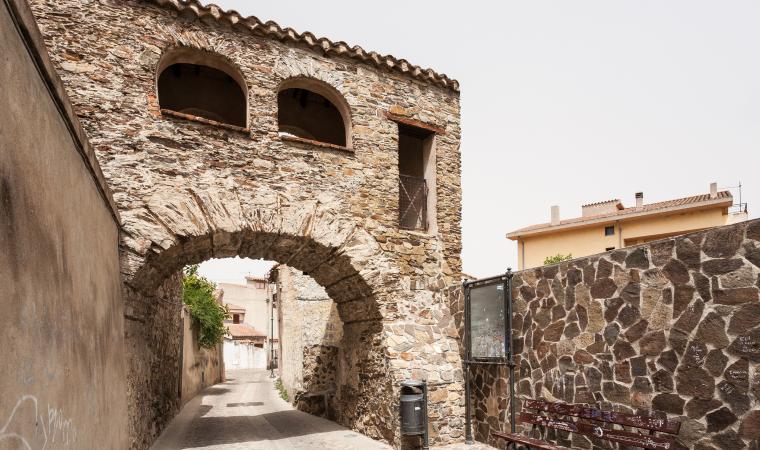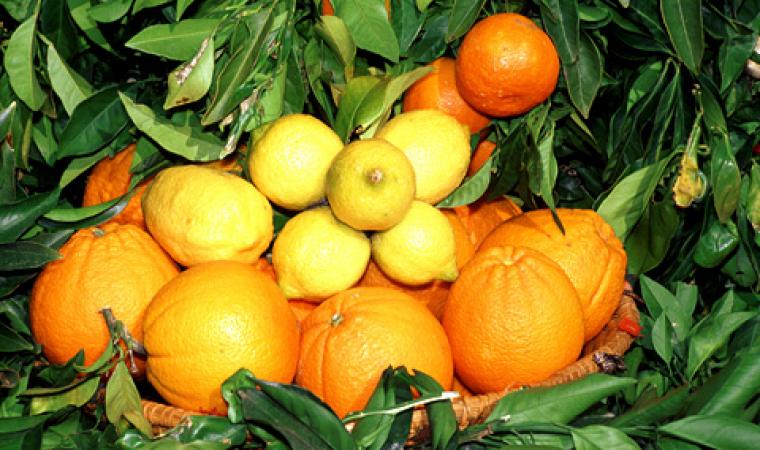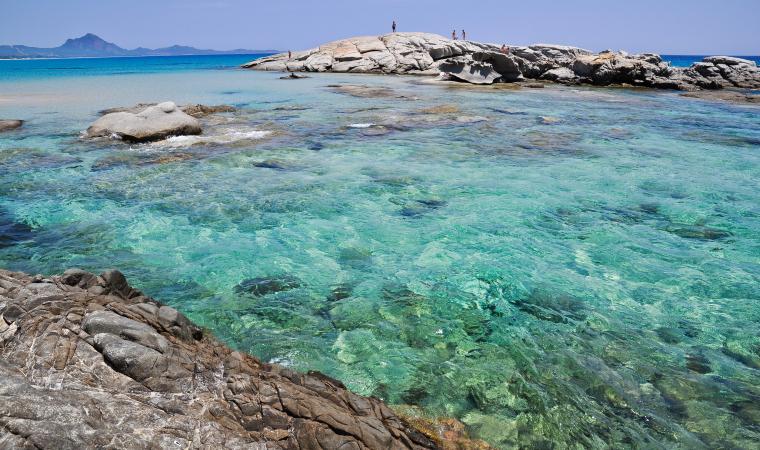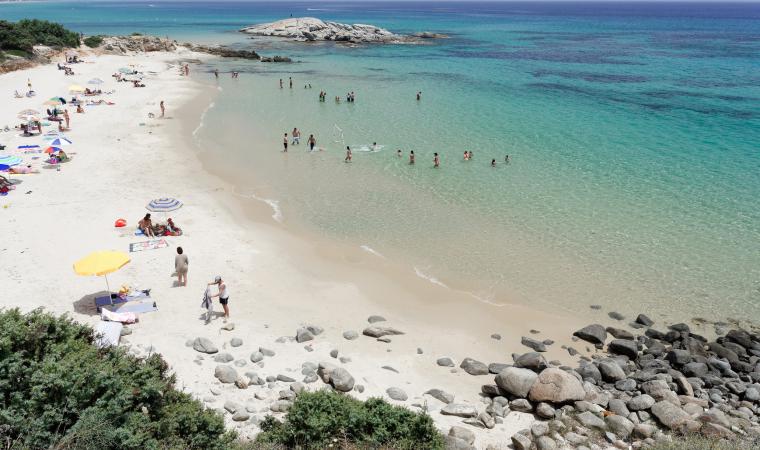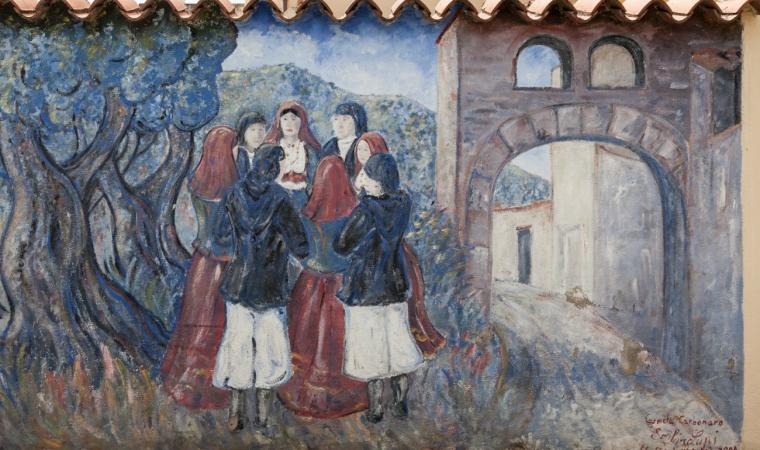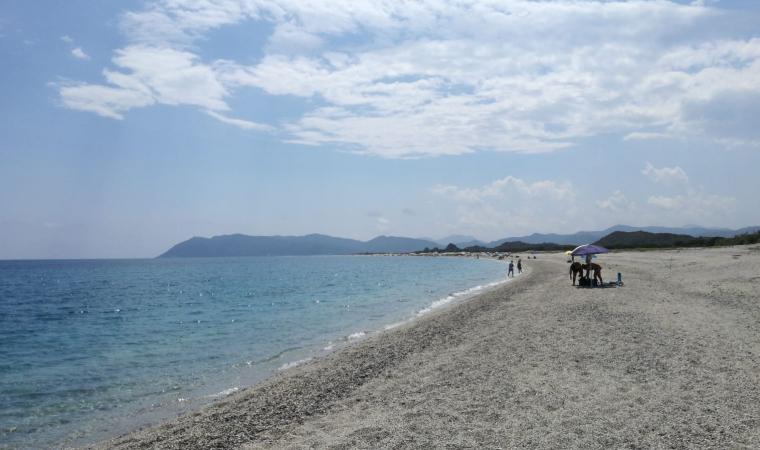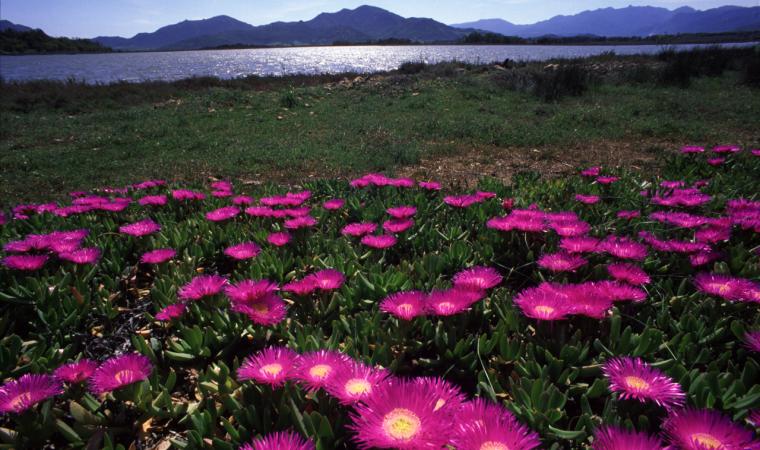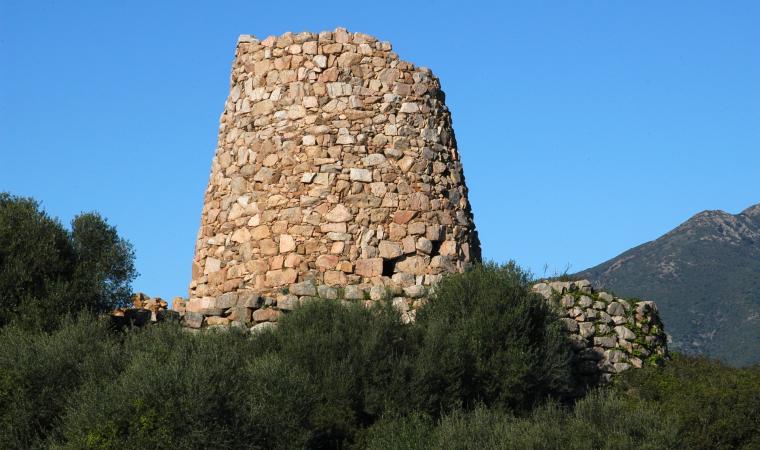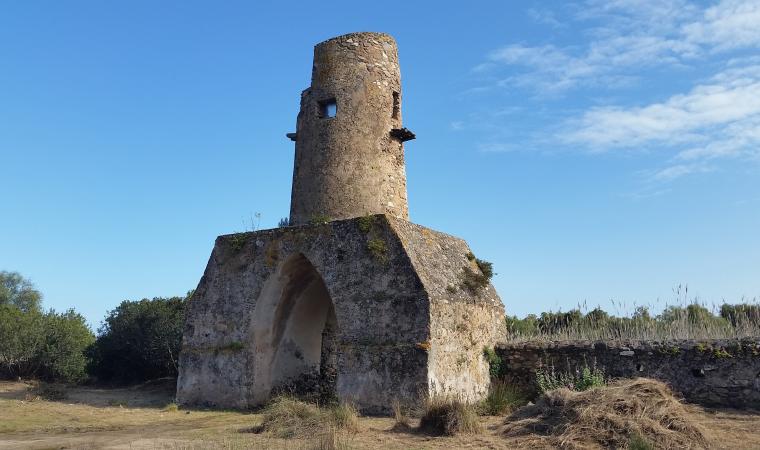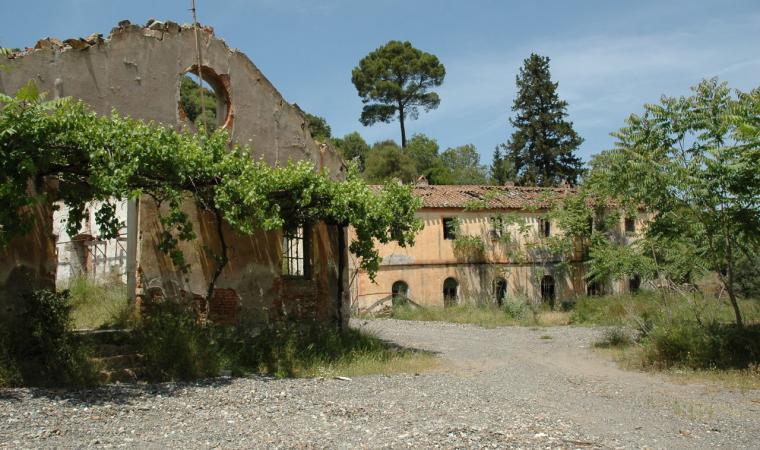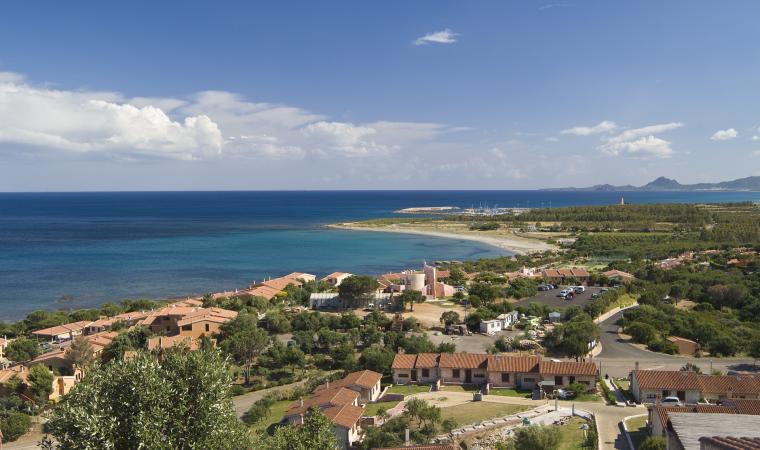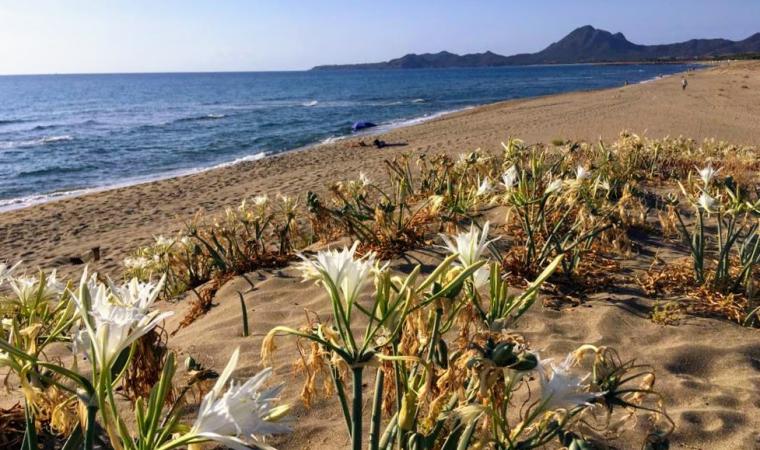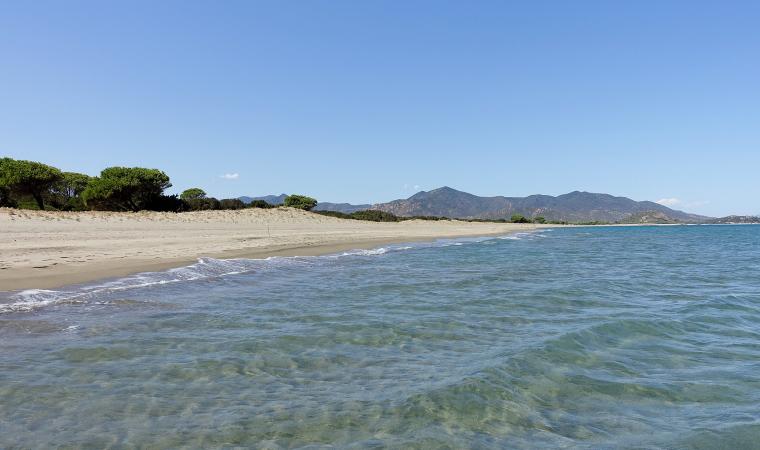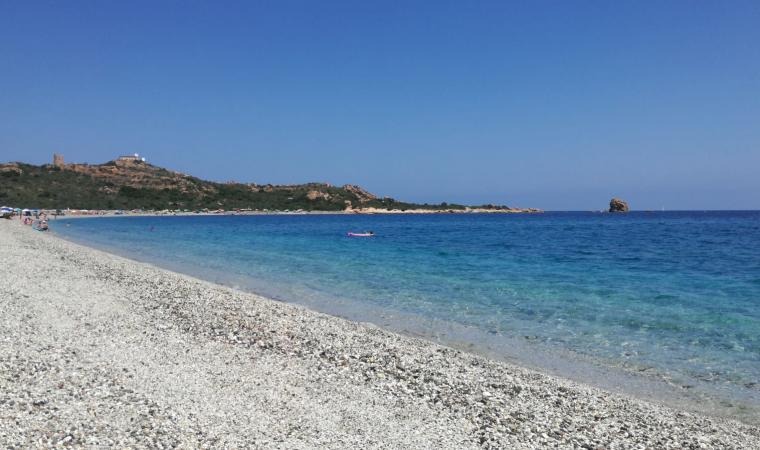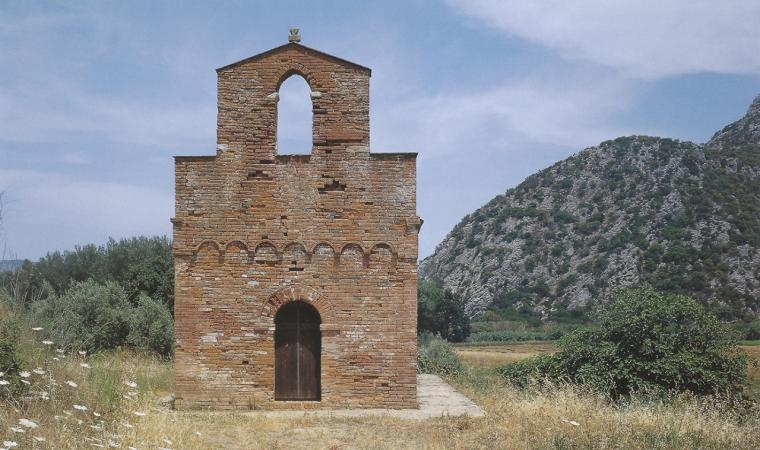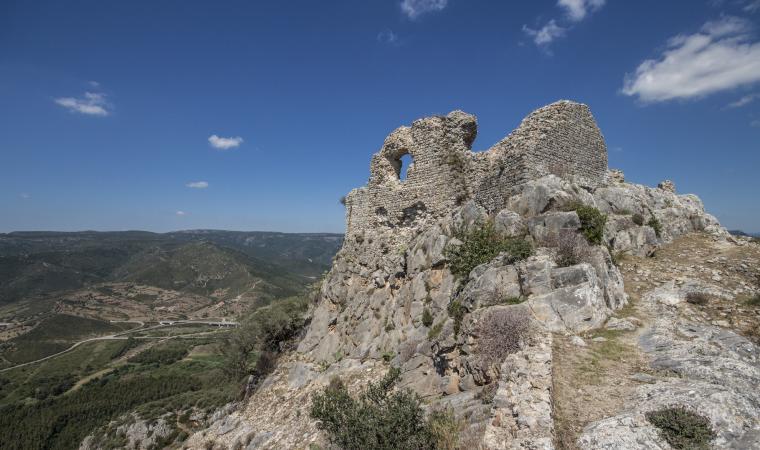Dazzling expanses of sand extend between the sea and the lagoons, guarded over by towers that were once witness to pirate assaults. Muravera is the main town in the Sarrabus sub-region, boasting a population of over 5,000 inhabitants. The territory extends along the Flumendosa valley, from the slopes of Monte Nieddu to the mouth of the river. It is one of the beauties of the Mediterranean, with its jewel-like beaches and marshes to explore by mountain biking or horseback riding, the Baccu Arrodas forest perfect for trekking amongst the holm oaks and strawberry trees, and the citrus gardens in one of the most productive agricultural hubs on the island. The coastline extends to the south of the area for tens of kilometres, starting from the quartz beach of San Giovanni. The coastal itinerary continues to the dunes of Colostrai covered with sea lilies and yellow poppies, and the two kilometres of fine bronze-coloured sand of Feraxi. Backdropping the sandy shores are three of the five Muravera lagoons, fauna oases inhabited by pied avocets, black-winged stilts, flamingos and passing storks. There are also fishing hubs nearby. Close to the granitic spur of Capo Ferrato are the secluded coves of Portu de s'Illixi, sa Figu and Porto Pirastu. The ‘pure white’ beach of Iba de ziu Franciscu leads to Costa Rei, the longest stretch of sandy coastline in eastern Sardinia, at almost eight kilometres extending to the Scoglio di Peppino (with two others in the territory of Castiadas). Spectacular in terms of amplitude and natural pools, it is divided into stretches bearing various names, including Piscina Rei.
For centuries, the coast was plundered by the Saracens. For defence purposes, the Torre dei Dieci Cavalli, Torre di Salinas and Torre di Monte Ferru were erected by the Spaniards (16th-18th centuries), from which the entire territory can be admired. Beginning from the 15th century in the Villae di Carruti, Sorrui and Petrera - today the oldest district - rose the churches of Santa Lucia, Santa Maria and San Giovanni Battista, along with the 16th-century parish church of San Nicola di Bari in late-Gothic style, which houses a marble altar, two ‘Baroque’ gilded wood altarpieces and a statue of San Sebastian from 1603 in polychrome wood. Attiguo is the former municipal building from the late-19th century. Also to be admired within the town is the sa domu de is candelajus, a manor house that was transformed into an ethnographic museum, the Portico Petretto and Casa Zedda, where a Roman cistern was discovered.
The Vallata del Flumendosa is extremely fertile, cultivated with rice and especially oranges, clementines, lemons and mandarins, which have been ‘protagonists’ each May since 1961 of the Sagra degli Agrumi (citrus festival). This is the event of the year, during which breads, cheeses such as su callu and casu axedu, honey, wines and desserts can also be savoured. The enchanting procession of traditional garments from all over the island is accompanied by the sounds of etnotraccas and launeddas, unique wind instruments of very ancient origin, made with reeds from the ponds where wicker and rush are also gathered, the raw materials used to create the woven baskets, one of the manufacturing arts, along with weaving of shawls, rugs and curtains, goldsmithing art with the filigree technique, and productions in wood, ceramics and copper. In August, the summer carnival Maskaras is held, featuring traditional masks.
Around the village, fascinating archaeological excursions await. There are a number of megalithic complexes from the late Neolithic period (3200-2800 BC) including the 53 menhirs of Cuili Piras, arranged in alignments from three to five and deeply embedded into the ground, aligned in accordance with sunrise and sunset and the moon phases, hence almost a ‘prehistoric clock’; the menhir complex at the foot of the upland of the Protonuraghe Scalas, the sites of Baracca su Entu and the nearby Piscina Rei basin, are where the Roman villages of Sipicio and Susalei arose. The Domus de Janas of Monte Nai also date back to the Neolithic period, with the Punic fortress of Baccu built nearby. Highlights from the Bronze Age including various Nuraghe, including Orcu and Ponzianu with a square layout, the horn-shaped Tomba Arcu Ziu Marinu and the necropolis of the Casa Murgioni with various baetyls.

